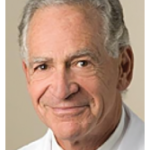Where We Are
Digital health is already being woven into healthcare, of course, Dr. Kvedar said. In his area, Walgreens, CVS and Blue Cross Blue Shield in Massachusetts are already doing video health visits.
Although many physicians say they’re enthusiastic about incorporating some kind of digital health into their practices—and some already are—they’re very concerned about liability. “We’ve got to work on that,” Dr. Kvedar said. “My advice: Decide what you want to do. You may decide you don’t want to participate. But don’t be caught by surprise because you didn’t think about it or you somehow thought it wasn’t going to happen. It is happening.”
Wearable medical technology is already becoming less about giving people feedback in the form of numbers—which in the end aren’t very inspiring—than about feedback that actually gives insight, Dr. Kvedar said. And pharmaceutical companies are no longer just offering drug therapies, but are offering wearables, too.
Potential Problems
But before this world of pervasive healthcare can happen, kinks need to be ironed out. One is the idea of “frictionless data capture,” he said.
“Our patients don’t give a hoot about Bluetooth and pairing and downloading apps—too much work, thank you very much,” he said. “We’ve got to make it so easy for them that they do one thing once, the whole thing’s paired; it’s passive data upload. We haven’t gotten there yet. And that’s one of the reasons mobile devices are lagging in terms of being used in this way by our patients. Even though they’re carrying mobile devices, we’ve made it too hard for them to engage with the technology.”
Another is the quality of the analytics—when it comes to healthcare, the recommendations generated by technology need to be more accurate than often-misguided movie and book recommendations, he said.
“If it’s a health behavior that someone’s recommending, we will not get a second chance,” he said. “We can’t have goofy recommendations. If we’re going to implement something like Sam, it has to be spot on.”
Lest doctors worry about their jobs, Dr. Kvedar said the physicians will remain central and predicted that relationships between patients and their doctors would only be strengthened with these technological advances. Patients “don’t want to disappoint you,” he said.
“If we design these programs to come from your healthcare provider and the patient knows that the healthcare provider cares and someone in the office is keeping track, that ups their game,” he said. “They do not want to look like they fell off the wagon. And all of these tools enable us to measure things in a very fine way so you can tell if they fell off the wagon or not.”



